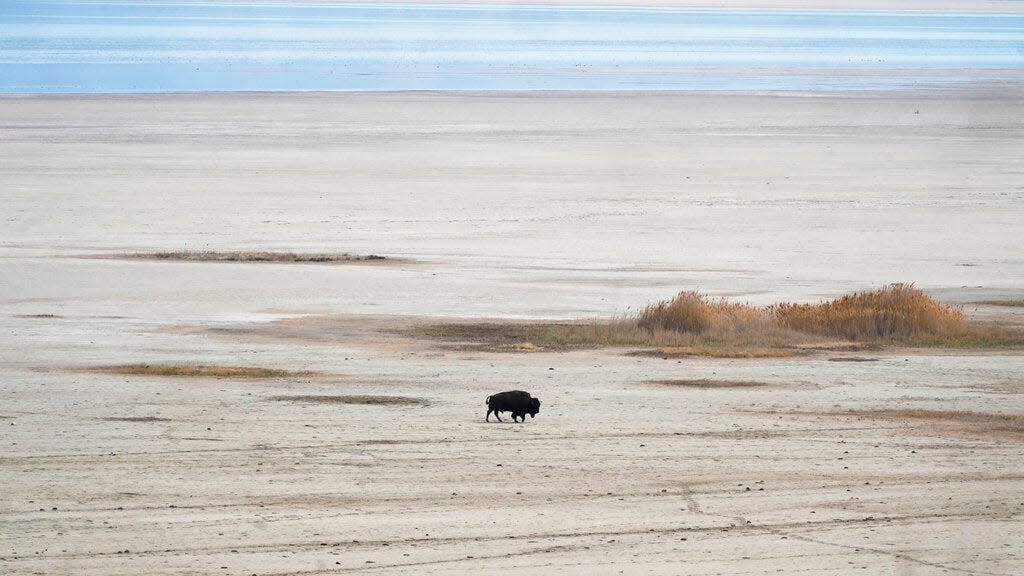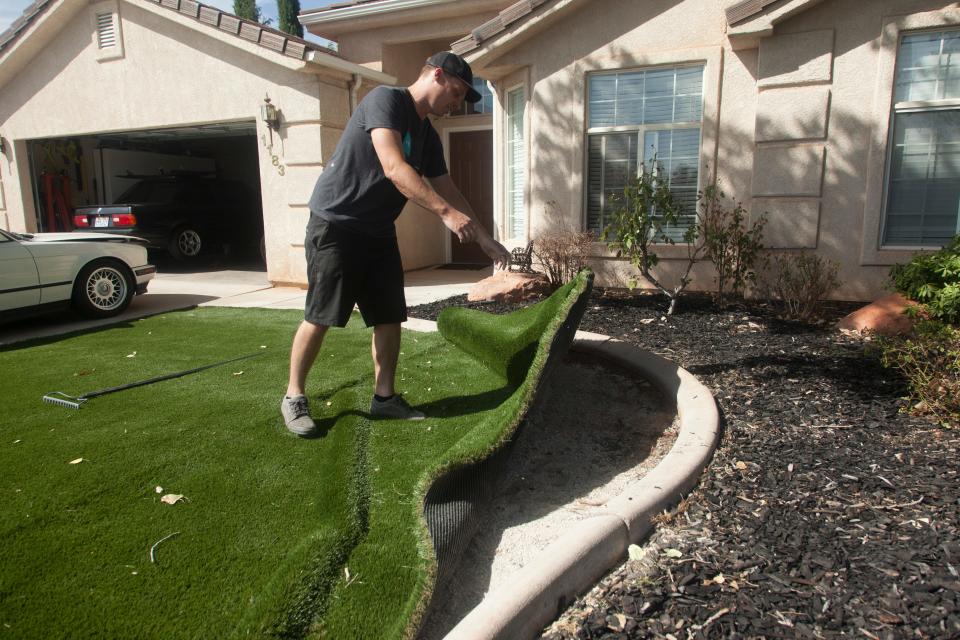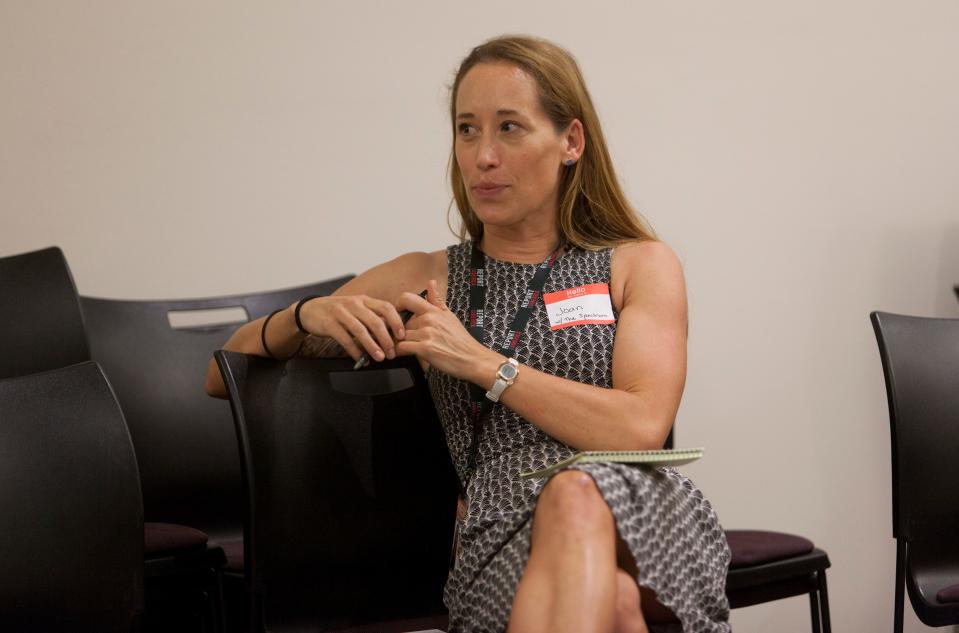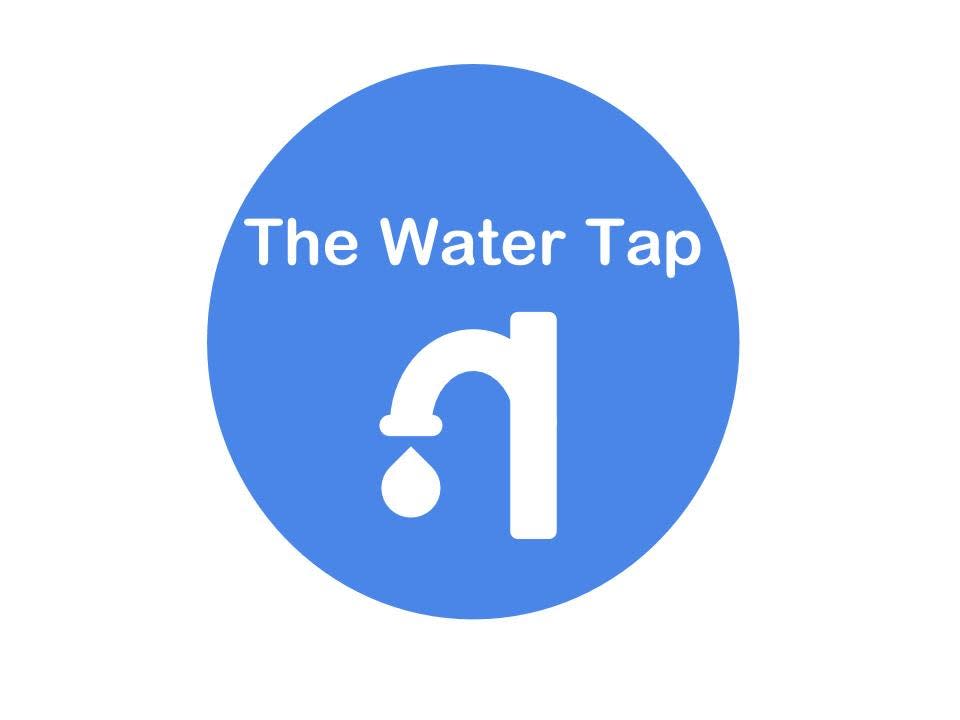The Water Tap on the Utah Legislature: Bills, bills everywhere and not a drop to drink

This article is part of a series addressing topics relevant to water security in southwestern Utah. Look for stories online and in print that feature updates on ongoing water issues, interviews with experts and explorations of how we can ensure a better water future for our growing communities.
In Utah's 2022 legislative session and the West's 22nd year of "Millennial Drought," the state Senate is verily flooded with bills about water.
Responding to the newly in-vogue theme of conservation, House Bill 95 and House Bill 121 both take aim at Utah's overabundance of turf grass, the removal of which has been shown to be one of the most effective ways for desert communities to conserve water and a topic that has been a recurring theme in this series. Senate Bill 73 looks to save water by setting limits on flow rates and modifying residential and plumbing fixture codes. (Installing more water-wise appliances was the second-most effective way that communities reduced water use, a 2020 study found). And House Bill 242 calls for the state to get a handle on how much water it is currently using by improving its (woefully outdated) secondary water metering system, while House Bill 115 points to a need to lose less water through infrastructure leaks.
More on turf removal in Utah: The Water Tap: Lessons from the Jordan Valley Water Conservancy District's turf removal program
Addressing water resources in the wild, House Bill 118 calls for increased collection and publication of survey data on important wetland habitats, such as those that surround and sustain the shrinking Great Salt Lake ecosystem. House Bill 131 seeks to establish and fund a state Watershed Restoration Initiative that would "manage, restore, and improve" watershed ecosystems for health, biological diversity, water quality and yield. And House Bill 37 amends the state water policy to include recharge of (directing more water into) underground aquifers that have been depleted from excessive well pumping.
On quality and access, House Bill 64 proposes moving $1.5 million from the General Fund to the Department of Environmental Quality in the name of protecting drinking water. House Bill 168 modifies rulemaking authority and "preferences of water rights" (who gets water first) during state water shortage emergencies. And Senate Bill 31 appears to want to give the state engineer more control over when and where water rights holders can divert water from a source.

There are more bills that reference state water management via text buried deeper than the title.
Some of this text makes it seem like the state may have turned over a new leaf regarding its oft-criticized-as-extravagant approach to water use, compared to other states in the southwest. HB37, for example, recognizes that "Utah is one of the most arid states in the nation and as such, there is, and will continue to be, a need to ensure Utah's finite water resources are used beneficially."
The Washington County Water Conservancy District sees the increased interest in water as progress. In an interview this week, Karry Rathje, the WCWCD's Communications Director, brought up the local "Water Summit" event the district held in November, which drew a large crowd, likely in response to the state's announcement two weeks prior that Washington County would likely run out of water in the next ten years.
The state's prediction: Washington County has 10 years to find a new source of water, according to state open house event
"We’re happy to see that water is such a prominent focus of this year’s legislative session," Rathje said. She added that the district supports all water conservation and "actions to reduce system loss," specifically stating WCWCD's support for SB73, HB95, HB115, HB121 and HB242 (reference bill details above).
Zach Renstrom, the WCWCD's General Manager, expressed excitement about the current legislative lineup and speculated that 2021's "exceptional drought" may have prompted Utahns to take notice of challenges the state faces with a simultaneously rising population and drying climate.
“There are a ton of water bills this year," Renstrom said. "It feels like a substantial increase. I think the drought has been a catalyst for a lot of these bills to come out. There’s a saying that 'you pay attention to water when your well goes dry.' People are thinking about it a lot more, including our legislature.”
We investigated: In Utah, while drought and growth leave residents scrambling for water, unknown quantities are quietly diverted off of Forest Service land
On some points, environmentalists like Kyle Roerink of the activist organization the Great Basin Water Network agree that the current legislation is signaling some positive change in Utah. Roerink said he is impressed with House Bill 33, which seems to emphasize the need for in-stream flows to preserve the natural spring environment, with nods in the bill text to sovereign lands and wildlife interests.
But he's disappointed with how some other once-promising water bills have fared in the session so far. A bill drafted by the Utah Rivers Council as a drought contingency plan for the Great Salt Lake was abandoned this week by its legislative sponsor, Roerink said. And he has concerns about the way Senate Bill 160, about the legislative body tasked with securing Utah's access to Colorado River water, seems to offer progress in one hand with a provision to improve consults with tribes, while it turns back the clock with the other hand by shielding the group's actions from full public view.
"I think it is insidious that they would couple the strong tribal language with the language to exempt themselves from accountability," Roerink said.

Digging into the language within any number of these water-related bills might generate cause for concern about motivations at the state level amid ongoing drought.
HB37, the one that recognized the need for Utah's finite water resources to be used beneficially, goes on to call for "water resource development and the creation of new water infrastructure necessary to meet the state's growing demand and promote economic development," naming the controversial Lake Powell pipeline project in the next line. Many environmental groups believe that Utah should scale back its own water use before trying to import new water from other strained sources.
Related: New Colorado River report takes aim at St. George's Lake Powell Pipeline
HB18, on the need for wetland data, has long passages about publishing state survey data on the presence of extractable mineral resources in these habitats, one of the most biologically productive and globally threatened ecosystems — disappearing three times faster than forests according to the United Nations Framework Convention on Climate Change. SB31, which seems to give the state engineer greater latitude over re-permitting where water can be diverted, mentions "livestock" six times in five pages but not in the title. And the language of HB168 leaves a lot of wiggle room for how a future "temporary water shortage emergency" is defined and who retains access to water when that occurs.
There are likely many more examples embedded within the fine print of these bills of changes that might not benefit all Utahns equally.
Science on water use: The Water Tap: How has water use changed in the west since 2000?
Water policy in Utah
With one month left to go, it's still too early to tell what results of the current legislative session will mean for water policy in Utah. The local environmental group Conserve Southwest Utah (CSU) is also following HB95, HB121 and HB242 with hope. But both CSU board member Ed Adrechak and Renstrom of the water district admitted hesitancy in their optimism.
“One thing I’ve learned is that, until a bill is passed and signed by the legislature, it makes me nervous to say that it’s a great bill, because it could change,” Renstrom said.
"The list of water bills changes each each week and will continue to be in flux until the end of the state session on March 4," Andrechak wrote in an email.
Believable? What is, and isn't, believable about next steps in water conservation?
How any changes enacted at the state level will influence water use in southwest Utah is even murkier still.
In the interview this week, Renstrom gave several different reasons for why water stats in Washington County won't shift much as a result of current bills. The St. George area, according to many calculations but not the district's own, has exceptionally high per capita water use despite reductions over recent decades.
“HB115 (on reducing loss from infrastructure) shouldn’t have a big effect down here because, for the most part, our systems are new," Renstrom said. "So it doesn’t affect us as much. But in some other areas of the state they have a leakier system, so it would be good to replace more of those pipes.”
He doesn't expect the passage of SB73, on upgrading plumbing fixtures and limiting flow rates, to be felt by local residents either.
“Down here we kind of do it as a practice, but SB73 would set a state policy for it," Renstrom said. "Down here we’ve already been doing it so I don’t think it would have a big effect."
‘We’re not going to make anybody rip out their lawn.’
As for the WCWCD's grass turf removal rebate program — which the district said in 2020 would be too expensive, then stated an intention to pursue via a press release in June issued days after our story on local support for this conservation measure published, then promised to have details about in December but hasn't announced anything — there is no word on whether HB95 or HB121 might help move that forward.
We asked: How Washington County residents feel about the Lake Powell Pipeline
The hang up, they say, is with the state's procurement policy limiting the transfer of large sums to individuals. For now, according to existing policy, it's a smoother legal process to just issue rebate checks from within the state coffer to other agency branches. So, the WCWCD plans to offer turf removal incentives to other government institutions later this year and then extend whatever additional funds might become available from the passage of HB95 or HB121 to local residents in 2023.
"The last thing I want is a program that starts and then fails because something doesn’t go right," Renstrom said of the district's latest approach to turf removal, the most effective conservation measure in desert climates. "I want to make it really easy for homeowners and right now there’s a lot of paperwork involved. I also want to make it clear that this will be a voluntary program. We’re not going to make anybody rip out their lawn."
Joan Meiners is the Environment Reporter for The Spectrum & Daily News through the Report for America initiative by The Ground Truth Project. Support her work by donating to these non-profit programs today. Follow Joan on Twitter at @beecycles or email her at jmeiners@thespectrum.com.

This article originally appeared on St. George Spectrum & Daily News: The Water Tap: Bills, bills everywhere and not a drop to drink

